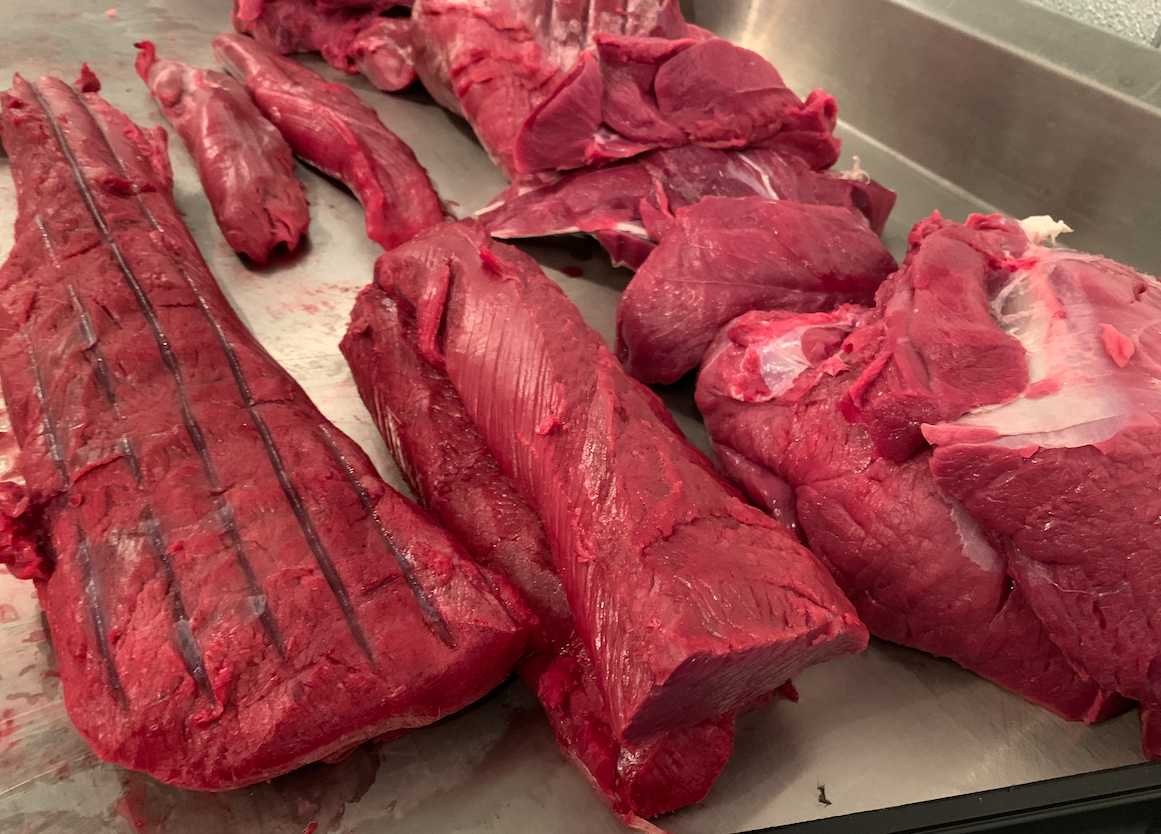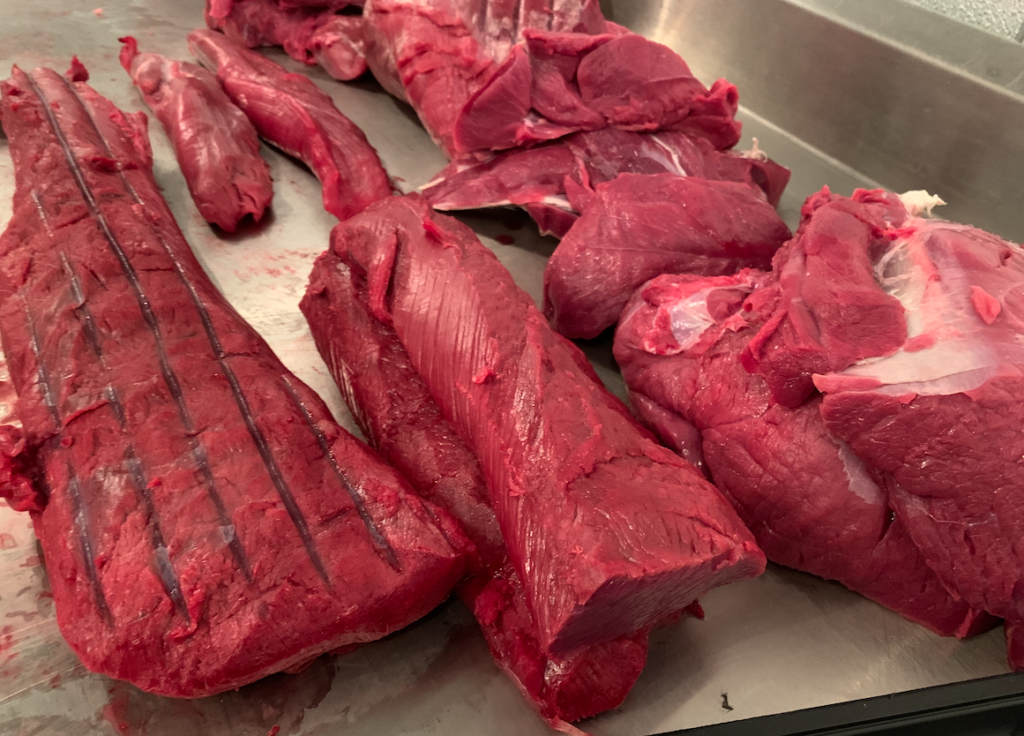How Do You Know if a Deer Has Cwd

A new test developed past researchers in Minnesota at present allows hunters to further decide if their venison is free of the chronic wasting disease prions. Although no scientific enquiry has shown a link betwixt CWD and human being disease concerns, some hunters are wary of eating venison from deer in CWD areas.
The news on the breakthrough was reported this morning by researchers at the Academy of Minnesota. Their research findings were published in the peer-reviewed journal Scientific Reports.

What follows is a news release issued today by UM:
St. Paul — University of Minnesota researchers have harnessed a highly sensitive test to notice the presence of chronic wasting disease (CWD)-causing prions in commonly consumed deer muscle tissue like backstrap and tenderloin—signaling the test could have future utility as a venison screening tool.
The examination is an in vitro amplification engineering science called real-time quaking-induced conversion (RT-QuIC), which researchers take previously used to observe CWD in various tissues and biological samples. However, this is believed to be the beginning fourth dimension the test has been used to analyze skeletal muscle tissues that are ordinarily consumed to await for show of CWD.
Although current standardized CWD-testing methods take been able to confirm the disease in muscle tissue, those methods have a high threshold for disease detection and nowadays technical challenges that prevent them from screening many samples at once—making them poorly suited for nutrient-safety tests.
Now, for the first time, researchers accept proof of concept of a highly sensitive CWD test that could be used every bit a venison-prophylactic screening tool. Currently, there are no federal guidelines for testing for CWD in venison during processing, nor are there validated CWD tests for food safety in the United States.
"At that place is growing business that particular strains of CWD have the potential to cause illness in both humans and livestock," said Assistant Professor Peter Larsen, PhD, who co-led the report, published this week in the journalScientific Reports. Larsen has too co-founded the Minnesota Centre for Prion Research and Outreach, which actively studies the disease. "We must identify technologies, like RT-QuIC, that tin be leveraged post-harvest to prevent CWD prions from inbound the nutrient chain."
The report's findings are important for a number of reasons. As of 2020, the Food and Drug Administration and the U.s.a. Department of Agriculture consider venison from CWD-positive animals as adulterated and unsuitable for human and animal consumption. At the same time, the Alliance for Public Wildlife has estimated that betwixt 7,000 and 15,000 CWD-infected deer are consumed each yr. Household pets also consume venison, as the ingredient is mutual in commercial cat and dog food.
Although no man infections from CWD have been documented, electric current information support that the risk is not zero, according to the University'south Eye for Infectious Disease Research and Policy.
CWD is a progressive neurodegenerative affliction—a fellow member of a family unit of diseases called transmissible spongiform encephalopathies. It was first documented in 1967; past 2019 it was confirmed in 26 states and three Canadian provinces, also every bit in Sweden, Norway, Finland, and South Korea. Information technology affects white-tailed deer, mule deer, red deer, sika deer, caribou, reindeer, elk, and moose—animals known as cervids. The disease produces pocket-sized lesions in an beast'due south brain and ultimately results in abnormal behavior, weight loss, loss of bodily functions, and death. CWD-causing prions lack genetic material and can only exist destroyed with specialized equipment or strong chemicals, which is what makes CWD so difficult to mitigate.
The research team, led past PhD-candidate Manci Li and Larsen, tested a variety of CWD-positive and CWD-negative tissues in white-tailed deer culled by the Minnesota Section of Natural Resources and the United States Section of Agriculture APHIS Wildlife Services. They also tested tongue, backstrap, tenderloin, forelimb, and hindlimb muscles, and establish statistically significant CWD prion-seeding activeness.
RELATED: University of Minnesota researchers develop novel, field-deployable test for CWD
"Our results, based on a sampling of various muscle groups, suggest that CWD prions are distributed across CWD-infected (white-tailed deer) skeletal muscles," the researchers wrote in the paper. They add that boosted research is needed to decide the full extent to which CWD prions occur within particular muscle tissue types of infected animals throughout the course of affliction.
Said Li: "This inquiry is very heady because we believe it will atomic number 82 to technologies capable of the high-throughput screening of CWD in a variety of venison products."
The study was funded by a combination of state and University sources, including the Minnesota Environment and Natural Resources Trust Fund as recommended past the Legislative-Denizen Commission on Minnesota Resources; the Minnesota Agricultural Experiment Station Rapid Agronomical Response Fund; and the Minnesota Agricultural, Research, Education, Extension and Technology Transfer program.
Source: https://www.deeranddeerhunting.com/content/blogs/dan-schmidt-deer-blog-whitetail-wisdom/new-test-can-determine-if-cwd-is-present-in-deer-meat
0 Response to "How Do You Know if a Deer Has Cwd"
Post a Comment